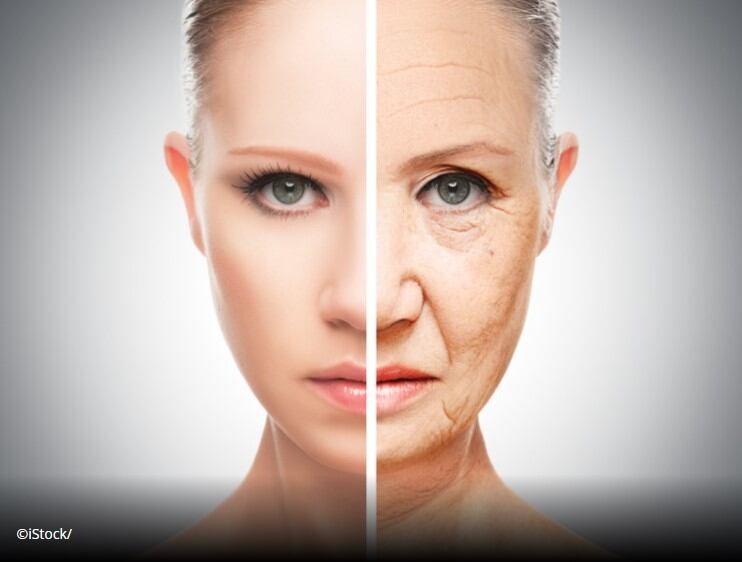The study points to bacterial enzymes such as fructokinases, as central in the glycation of skin collagen and elastin that leads to the loss of skin elasticity and sagging seen in ageing skin.
“Taken together, the results and insights described in this paper provide new leads for intervening with bacterial processes that are associated with ageing of human skin,” writes the team.
“This approach can also be applied on data derived from other body sites (e.g. gut, oral cavity, etc), although the set of reference organisms to include should be adapted to reflect relevance to that particular body site.
“These experiments will provide the next step in understanding the molecular processes in skin ageing and the role of the microbiome in these processes.”
Published in the journal Plos One, the researchers began a literature search to identify common biologic pathways between humans and skin microbes linked to intrinsic skin ageing.
The team then took skin swab samples from 25 female participants that fell into two ‘young’ and ‘old’ age groups, one aged 20–28, and the other aged 59–68.
16S ribosomal RNA sequencing testing was then used to confirm skin microbiome and age-related skin changes seen in female participants from certain studies.
Results revealed the main bacterial pathways associated with ageing skin were those involved in the production of pigmentation intermediates, fatty acids and ceramides.
Protein glycation
“This study furthermore provides evidence for a relation between skin ageing and bacterial enzymes involved in protein glycation,” the team adds, which also includes scientists from NIZO Food Research in Amsterdam.
“Taken together, the results and insights described in this paper provide new leads for intervening with bacterial processes that are associated with ageing of human skin.”
Delving deeper into the bacterial communities that may be involved in age-related skin changes, the research team identified a link of (amongst others) Corynebacterium, Veillonella and Chryseobacterium with the old age group.
However, when the microbiome was correlated with phenotypic read outs aggregated in a skin ageing (SA) score, a higher relative abundance of Propionibacterium was associated with older-looking skin.
This underscores the importance of selecting the most relevant phenotypic variable when running the statistical analysis, the team says.
“The data from this study demonstrates that skin with a higher SA score is associated with an increased presence of bacterial metabolic pathways involved in radical protection and protein glycation, and underrepresentation of genes related to pigmentation,” the team concludes.
“In inferring a causal relationship, or even inferring that these pathways are also functionally more active than other pathways in these groups, can only be justified when more data are available on the actual levels of metabolites and transcripts of these genes.
“Moreover, a more sophisticated method for scoring could be developed that takes into account the dependence and redundancy of gene functions in pathways, rather than simply counting the number of instances of these genes,” the team acknowledges.
A body of evidence
A selection of studies have investigated the changes in the skin microbiome associated with skin ageing and therapeutic intervention.
In general, the findings of these studies showed that the skin microbiome consists of a number of microbial genera that are consistently found in all humans (notably species from Staphylococcus, Cutibacterium, Corynebacterium and Acinetobacter).
However, the exact composition is influenced by, amongst others, body site, gender, geographic location and age.
In one study, an overrepresentation of Alistipes, Prevotella, Porphyromonas, Sphingobacterium, Lactobacillus, Aerococcus, Oscillospira and Ruminococcus was found in the younger group (25–35 years old) of healthy female volunteers
The team also observed an overrepresentation of Micrococcus, Corynebacterium, Dermacoccus, Actinomyces Streptococcus, Lysinibacillus and Bacillus in the older group (56–63 years old).
Another study described an increase in Corynebacterium, Neisseriaceae, Chryseobacterium, Prevotella, Veillonella in older skin and also showed a direct correlation of a number of representatives of these bacterial families with wrinkles and the number of pigmented spots in skin.
Similarly, another study described higher levels of Corynebacterium and reduced levels of Propionibacterium in older skin (54–69 years old).
Source: PLOS One
Published online: doi.org/10.1371/journal.pone.0258960
“Charting host-microbe co-metabolism in skin ageing and application to metagenomics data.”
Authors: Wynand Alkema et al.


